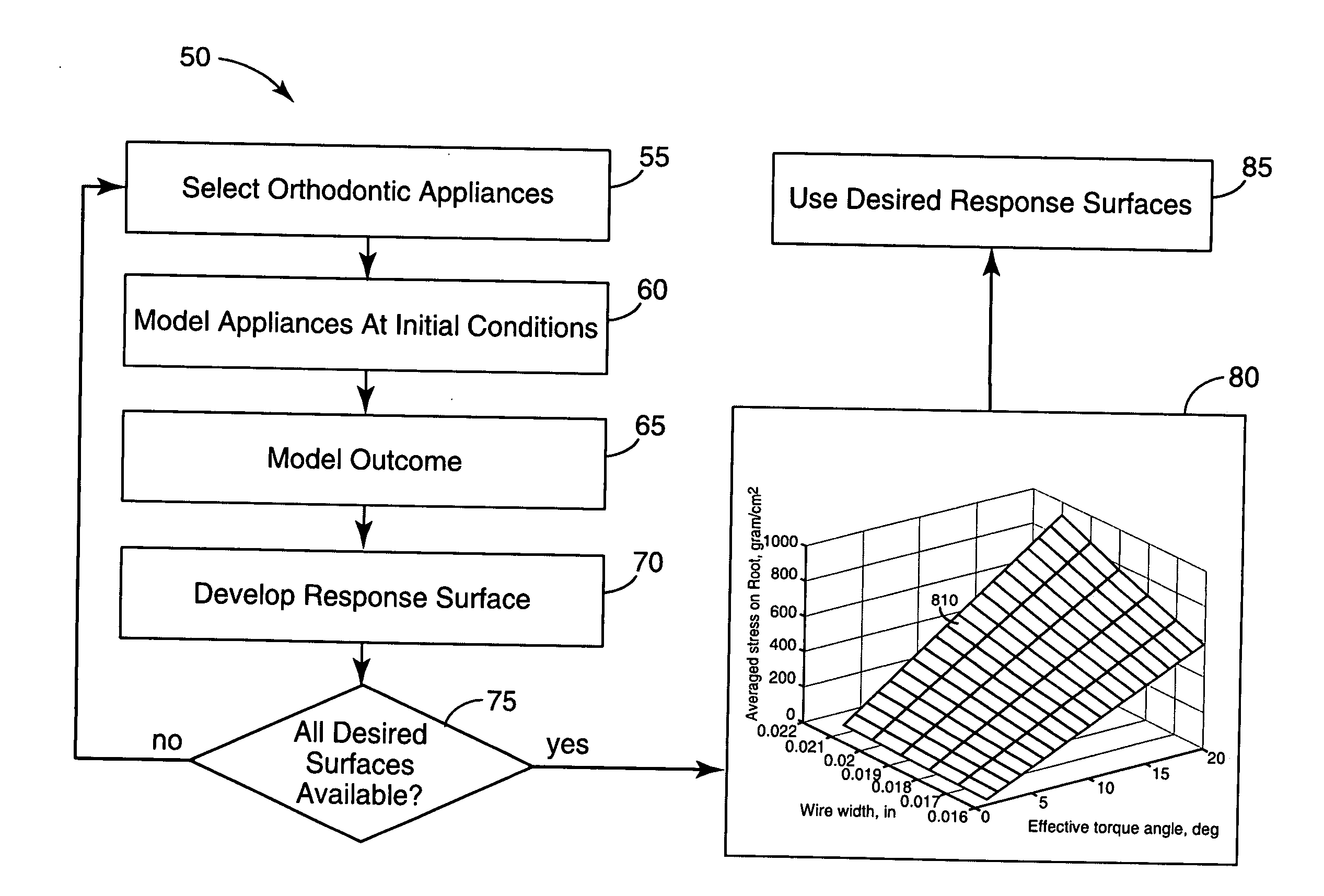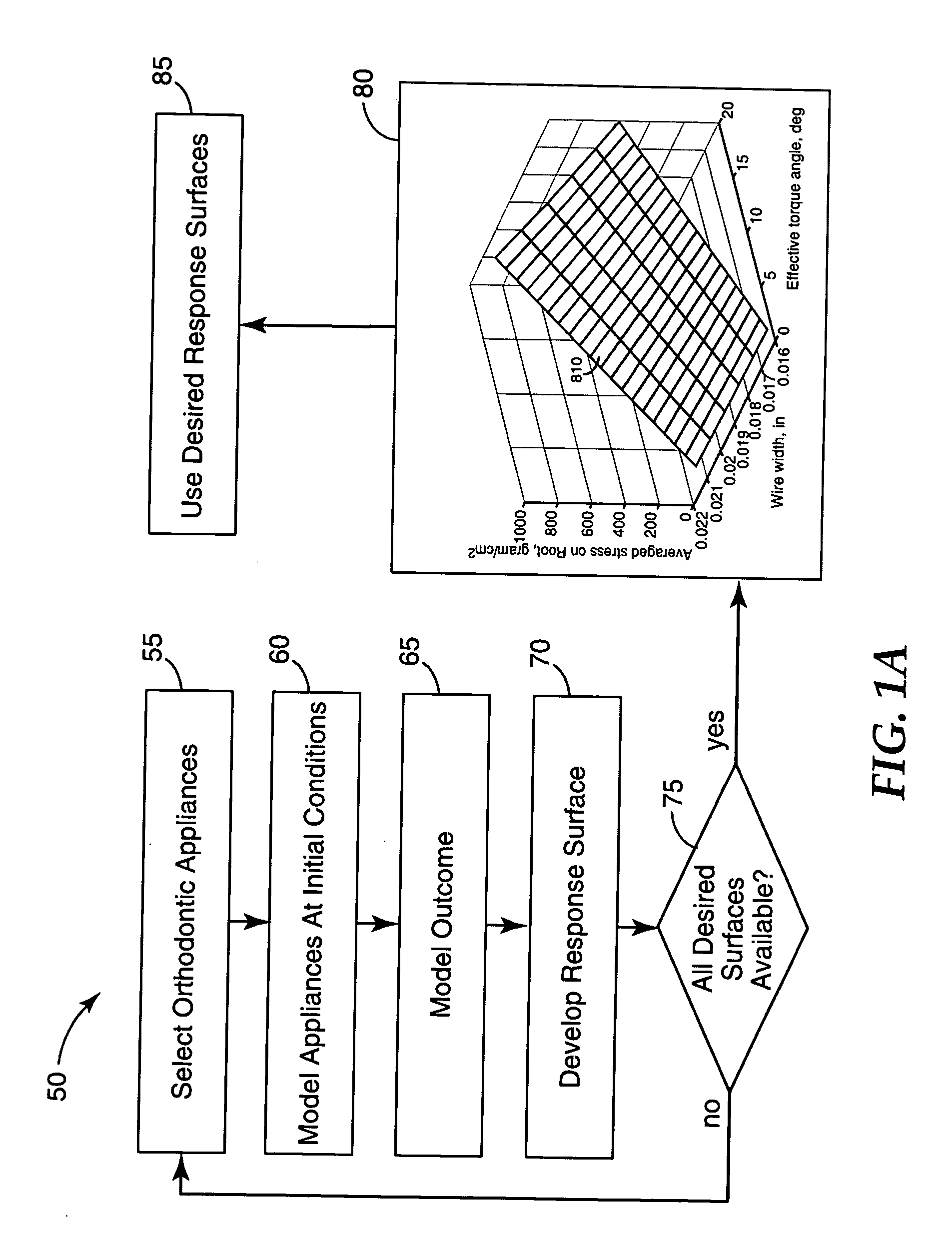Response surfaces for orthodontic treatment planning
a technology of orthodontic treatment and response surfaces, applied in the field of orthodontic treatment planning, can solve the problems of insufficient tension, few tools for orthodontists, and use of headgear
- Summary
- Abstract
- Description
- Claims
- Application Information
AI Technical Summary
Benefits of technology
Problems solved by technology
Method used
Image
Examples
Embodiment Construction
[0026] In the following description of the illustrated embodiments, reference is made to the accompanying drawings, which form a part hereof, and in which is shown by way of illustration, various embodiments in which the invention may be practiced. It is to be understood that the embodiments may be utilized and structural changes may be made without departing from the scope of the present invention.
[0027] The present invention relates to orthodontic treatment planning methods and devices. More particularly, the present invention relates to using response surfaces for orthodontic treatment planning, and / or appliance selection, and / or prescription validation. A response surface is a two or more dimensional output defined as a function of input parameters. For example, a mathematical relationship may define output parameters as a function of input parameters. A response surface may use the mathematical relationship to express the output in the form of data, graph, table, computed nume...
PUM
 Login to View More
Login to View More Abstract
Description
Claims
Application Information
 Login to View More
Login to View More - R&D
- Intellectual Property
- Life Sciences
- Materials
- Tech Scout
- Unparalleled Data Quality
- Higher Quality Content
- 60% Fewer Hallucinations
Browse by: Latest US Patents, China's latest patents, Technical Efficacy Thesaurus, Application Domain, Technology Topic, Popular Technical Reports.
© 2025 PatSnap. All rights reserved.Legal|Privacy policy|Modern Slavery Act Transparency Statement|Sitemap|About US| Contact US: help@patsnap.com



